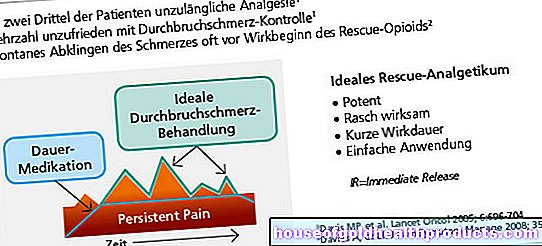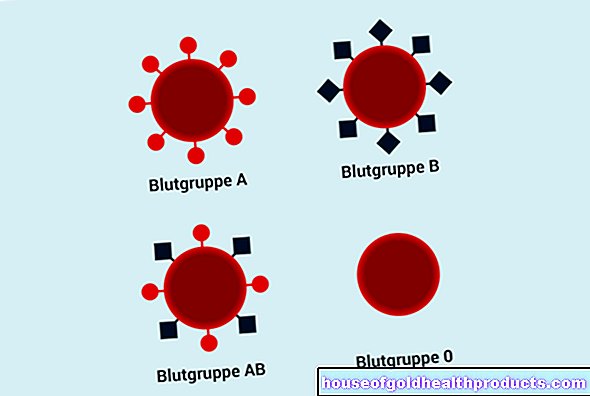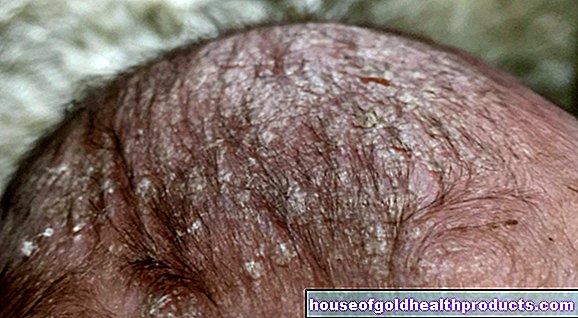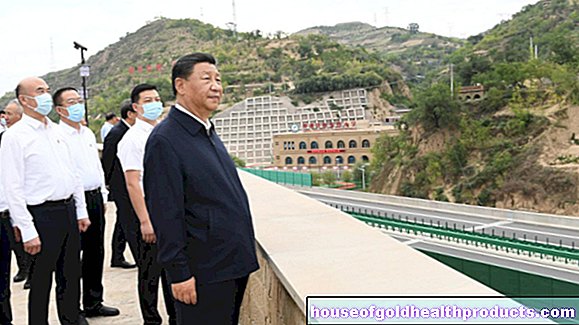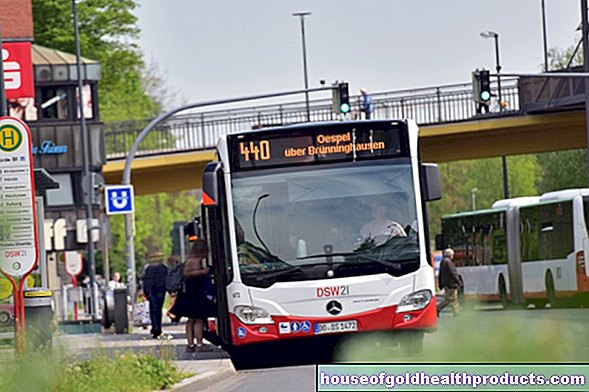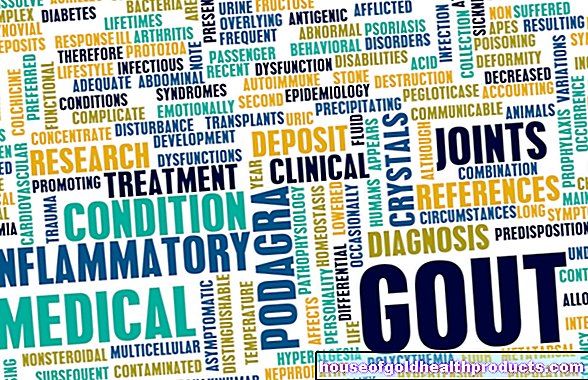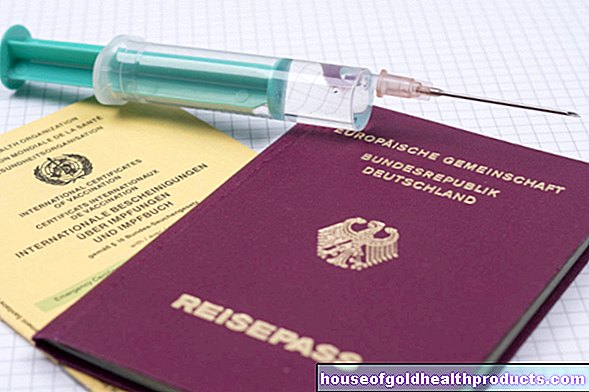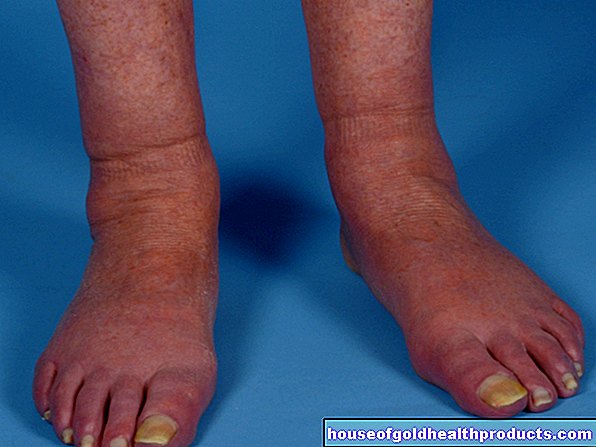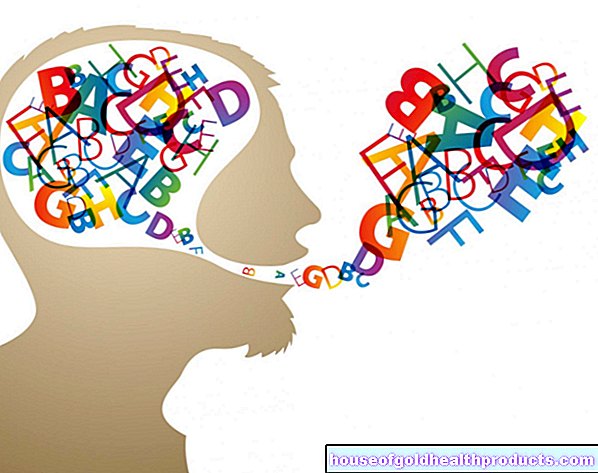Renal artery stenosis
All content is checked by medical journalists.Renal artery stenosis (NAST for short) describes a constriction in a blood vessel that supplies the kidney. One or both renal arteries can be affected by this vascular change. A frequent consequence of the vascular obstruction is high blood pressure (renovascular hypertension). Here you will find everything you need to know about symptoms, causes and treatment for renal artery stenosis.
ICD codes for this disease: ICD codes are internationally recognized codes for medical diagnoses. They can be found, for example, in doctor's letters or on certificates of incapacity for work. I77I70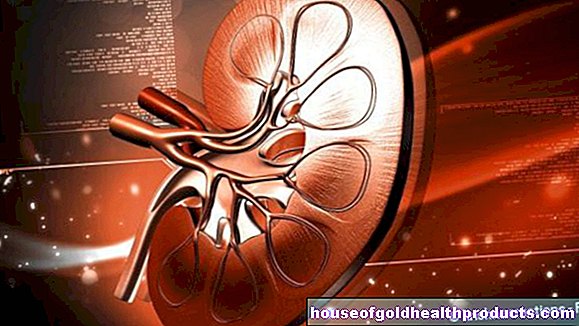
Renal artery stenosis: description
Renal artery stenosis is a condition in which a narrowing of the renal artery has formed. The renal arteries branch off from the abdominal aorta at the level of the kidneys. Usually the stenosis is close to the junction of the abdominal aorta. In general, the risk of renal artery stenosis increases with age, but depending on the cause of the disease, it can also occur at a younger age. The vascular obstruction can occur on one or both sides. Since the kidneys play a key role in regulating blood pressure, the narrowed renal artery often results in excessively high blood pressure.
The blood pressure is regulated by the kidneys via a specialized cell unit (juxtaglomerular apparatus) that measures the salt content of the blood on the one hand and the blood volume on the other. With renal artery stenosis, the narrowed artery reduces blood flow in the kidneys - they mistakenly register blood pressure that is too low, even though it is normal or may even be high. This activates a cascade of reactions that doctors also refer to as the renin-angiotensin-aldosterone system (RAAS).
The specialized kidney cells of the juxtaglomerular apparatus first release the protein-splitting enzyme renin. Renin now splits angiotensinogen - a protein that is produced in the liver - into angiotensin I. Another enzyme (angiotensin converting enzyme) converts angiotensin I to angiotensin II in the last step. Angiotensin II eventually causes the blood vessels to contract and thus the blood pressure to increase. In addition, angiotensin II stimulates the adrenal glands to release the hormone aldosterone, which also increases blood pressure.
The activation of this chain of reactions by renal artery stenosis is also called the gold leaf effect.
Renal artery stenosis: symptoms
In many cases, the symptoms of renal artery stenosis are unspecific because those affected do not feel anything from the narrowed blood vessel. Although high blood pressure is a typical consequence of the vascular changes, this in turn often causes hardly any symptoms at first. The following symptoms can indicate high blood pressure:
- dizziness
- Headache (especially in the morning)
- nervousness
- nausea
- Visual disturbances
Frequently, sudden phases with high blood pressure, so-called hypertensive crises, indicate renal artery stenosis. In some cases, water also collects in the lungs during such a blood pressure crisis (pulmonary edema). This reduces the physical resilience and the affected person suffers from shortness of breath.
Renal artery stenosis: causes and risk factors
There are essentially two types of renal artery stenosis:
Atherosclerotic renal artery sclerosis:
The most common cause of renal artery stenosis (NAST) is hardening of the arteries. Doctors then also speak of arteriosclerotic renal artery stenosis, or ANAST for short. It is the reason for the vascular change in 75 percent of cases and occurs more frequently in men than in women. Deposits on the vessel wall (so-called plaques) cause the diameter of the blood vessel to narrow. Since vascular deposits tend to increase with age, the risk of renal artery stenosis also increases with age.
Fibromuscular renal artery stenosis:
About 25 percent of renal artery stenoses are due to this form. It mostly affects younger women around the age of 30. In around 60 percent of those affected, the arteries of both kidneys are narrowed. The cause of the fibromuscular renal artery stenosis is a congenital defect in the structure of the vessel wall.
In addition to these two most common forms, there are also some rare causes of renal artery stenosis. This includes, for example, an aneurysm - a pathological vascular sac. Inflammation of the arteries in special diseases (e.g. panarteritis nodosa or Takayasu arteritis) can also lead to narrowing of the renal arteries.
Renal artery stenosis: examinations and diagnosis
In most cases, high blood pressure indicates possible renal artery stenosis. The family doctor often finds by chance during a routine examination that the blood pressure is noticeably increased.
The following hints make the doctor think about renal artery stenosis:
- High blood pressure in young women around the age of 30
- High blood pressure in men over the age of 50
- Hypertensive crises
- Sudden pulmonary edema
- Evidence of kidney failure
If the doctor suspects renal artery stenosis, he will listen to the patient's chest and abdomen with a stethoscope as part of the physical examination. If one or both renal arteries are narrowed, a hissing flow noise can often be heard in the area of the flanks. Even if the blood pressure is difficult to bring to a normal level despite antihypertensive drugs, there is a suspicion of renal artery stenosis.
If this suspicion is confirmed, the doctor will initiate further examinations. Renal artery stenosis can be identified using the following imaging tests:
- Duplex sonography: With this ultrasound method, the blood flow within the blood vessel can be made visible in color.
- MRI angiography (MRA): The patient is given a contrast medium during magnetic resonance imaging. This allows the blood vessels concerned to be displayed. In addition, a three-dimensional image can be digitally calculated from the individual slice images of the MRT.
- CT angiography (CTA): Computed tomography also produces slice images of the body, which, in contrast to MRI, are not created by a magnetic field, but with the help of X-rays. Similar to MRT angiography, a contrast agent makes the vessels visible; the doctor also assesses a three-dimensional image here.
- Digital subtraction angiography (DSA): This technique allows a very precise assessment of blood vessels. In the first step, an image of the respective organ is made without contrast agent, which doctors call a "mask". The patient then receives the contrast agent. A series of recordings is now made. These are subtracted from the mask image and disruptive image elements are thereby masked out. Doctors only use DSA if the other imaging methods are inconclusive and if renal artery stenosis is still suspected.
Renal artery stenosis: treatment
Treatment for renal artery stenosis depends on its extent and the symptoms associated with it. Treatment is indicated under the following conditions:
- The renal artery is at least 70 percent narrowed
- For high blood pressure, which is difficult to control with medication
- Pulmonary edema suddenly develops
- If you have kidney failure (kidney failure)
- In the case of fibromuscular renal artery stenosis
The aim of treatment is to remove the bottleneck in the renal artery and thus ensure normal kidney blood flow. The following methods are suitable for this:
- Percutaneous transluminal angioplasty (PTA): In this method, doctors insert a narrow, flexible tube (catheter) into the blood vessel in question. To remove the stenosis, use a small balloon to expand the vessel section (balloon dilatation) or insert a small metal mesh tube (stent) that keeps the narrowed artery open.
- Vascular bypass: the surgeons bridge the vascular obstruction using an artificial or natural vascular prosthesis. In contrast to the PTA, this procedure requires an open stomach operation.
Renal artery stenosis: prevention
Smoking, obesity and diabetes mellitus are considered risk factors for vascular calcification. While renal artery stenosis cannot be prevented in principle, you can reduce the risk of vascular deposits by:
- do not smoke
- maintain a healthy weight or reduce weight if you are overweight
- Have diabetes treated and controlled if you are diabetic
Renal artery stenosis: disease course and prognosis
If left untreated, renal artery stenosis will progress. Numerous complications can arise as a result. With advanced disease, kidney weakness can develop. Ultimately, the renal artery can become completely closed and permanent kidney damage threatens.High blood pressure, which often occurs in this context, can also result in other diseases, especially of the heart and circulation.
In fibromuscular renal artery stenosis, blood pressure returns to normal in 75 percent of cases after appropriate treatment. If atherosclerosis is the cause of renal artery stenosis, high blood pressure can persist in some cases despite therapy. Basically, there is also a certain risk that the blood vessel will close again after the treatment.
Tags: alternative medicine drugs laboratory values

